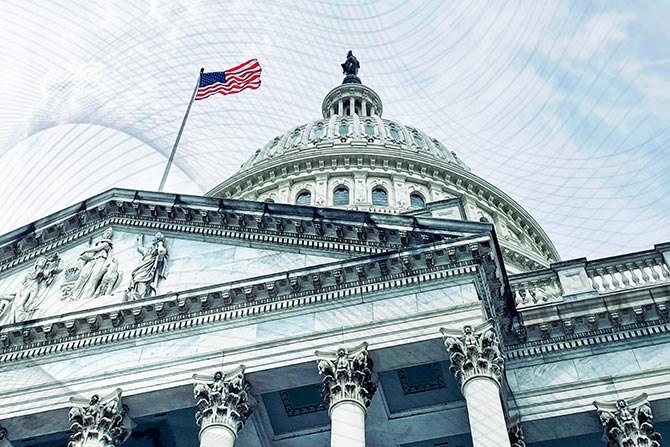The SECURE Act of 2022 (SECURE 2.0) made many changes to both individual retirement accounts (IRAs) and retirement plans sponsored by employers. But, like comparable past legislation, not all SECURE 2.0 provisions took effect immediately. One reason is the federal tax impact of some provisions. Tax benefits to individuals and businesses may have the effect of reducing federal tax revenue, which lawmakers may choose to “pay for” over time by delaying the effective date of certain provisions. The following are important provisions of SECURE 2.0 that did not take effect immediately but became effective in 2024.
IRA Related Provisions
IRA Catch-Up Contributions Now Indexed: Contribution-eligible Traditional and Roth IRA owners age 50 and older may make an additional “catch-up” contribution. This contribution — which was formerly fixed by statute at $1,000 — will, in future years, be indexed for inflation in $100 increments.
529 Plan-to-Roth IRA Rollovers: 529 plan designated beneficiaries may roll over certain balances in their 529 plans to a Roth IRA. Amounts rolled over are subject to a lifetime limit of $35,000 and, in any year, may not exceed the lesser of a designated beneficiary’s earned income or that year’s Roth IRA contribution limit (further reduced by any other IRA contributions made for that year). The 529 account must have been in effect for 15 or more years, and amounts rolled over must have resided in the account for at least five years.
Employer Plan Related Provisions
Mid-Year Switch from SIMPLE IRA to Safe Harbor 401(k)/403(b) Plan: Employers that sponsor a SIMPLE IRA plan may now make a mid-year change to a safe harbor 401(k) or 403(b) plan. Under previous rules, such a change could only be effective as of the next calendar year. Existing amounts in these SIMPLE IRA accounts are immediately eligible for rollover to the successor safe harbor plan, regardless of whether the SIMPLE IRA accounts have received contributions for two or more years, so long as the amount that is rolled over is subject to the distribution restrictions of the 401(k) or 403(b) plan, as applicable.
Additional SIMPLE Plan Employer Contributions: In addition to the standard employer matching or nonelective contribution, employers may now make additional nonelective contributions for the year. These contributions may not exceed a uniform percentage of up to 10% of annual compensation or — if less — $5,000 per employee. This amount will be indexed for inflation.
Larger SIMPLE Plan Employee Contributions: Certain employers may allow increased salary deferral limits for their employees. Eligible employers are those who did not offer a 401(a), 403(a) or 403(b) plan to the same employees during a three-taxable-year period preceding the year that they established the SIMPLE plan. For such employers, SIMPLE plan salary deferral limits for 2024 may be increased by 10% above the cost-of-living-adjusted limits. The increased limit applies to both the base salary deferral limit, and to the catch-up contribution for employees age 50 or older.
The increased limits apply automatically to plans of those employers with no more than 25 employees who earned $5,000 or more for the previous year, regardless of whether they have otherwise met plan eligibility requirements. Employers with more than 25 such employees may elect to have the increased salary deferral limits apply. If they do, the employer must match salary deferrals up to 4% of compensation (not 3%) or make nonelective contributions to all who are eligible — if this is the chosen form of employer contribution — of 3% (not 2%) of compensation. An employer may revoke an election for this higher deferral limit.
Employer Matching Contributions for Student Loan Payments: SECURE 2.0 permits employers with a retirement plan that provides matching contributions for employee salary deferrals to make matching contributions based on qualified student loan payments. If a plan requires nondiscrimination testing of salary deferrals (401(k) plans do; 403(b), governmental 457(b) and SIMPLE IRA plans do not), those receiving such matching contributions may be tested separately. Normal plan vesting rules apply to matching contributions that are linked to student loan payments.
Involuntary Cash-outs for Terminated Employees: Plan participants who terminate employment may be involuntarily “cashed out” of their former employer’s plan if their plan balance is small and if they do not specify an alternative distribution option. SECURE 2.0 raises the cash-out limit — formerly $5,000 — to $7,000.
“Starter” 401(k) and 403(b) Plans: Employers that do not sponsor a retirement plan under which contributions are made, or benefits accrue, may establish one of these plans, whichever their organizational structure allows. Automatic enrollment at a rate of at least 3% of compensation (not to exceed 15%) is required, no employer contributions are permitted and annual deferrals are limited to $6,000 — $7,000 for those age 50 or older; both amounts are indexed for inflation.
Pension-linked Emergency Savings Accounts in Employer Plans: Salary deferral-type employer plans — 401(k), 403(b), and governmental 457(b) plans — may permit participants to allocate up to $2,500 of salary deferrals to an accessible account that is not subject to standard distribution criteria, or the 10% early distribution penalty tax. The employer may set a lower contribution limit or not permit the option at all.
Retroactive Amending to Increase Employer Contributions: Beginning with 2024 plan years, employers may amend their plans to increase employer contributions — other than matching contributions — as late as the employer’s tax return deadline, including extensions for the taxable year in which the amendment is effective.
Permanence of Safe Harbor for Certain Plan Corrections: SECURE 2.0 makes permanent a temporary safe harbor for correction of certain retirement plan operational failures, which include failures in implementing a plan’s auto-enrollment or auto-escalation provisions, failure to follow an affirmative salary deferral election, or failure to allow an eligible employee to make a deferral election. If its conditions are met, the employer need not make a nonelective contribution for the missed deferral opportunity.
Spouse Beneficiary Election to be Treated as the Participant: A spouse who is a plan participant’s sole beneficiary and who retains her inherited benefit in an employer plan may elect to be treated as the plan participant for required minimum distribution (RMD) purposes and — if RMDs are required — be subject to calculations using the Uniform Lifetime Table instead of the beneficiary Single Life Expectancy table.
Provisions Affecting Both IRAs and Employer Plans
Penalty-Free Distributions for Emergency Expenses: Individuals subject to the 10% early distribution penalty tax may take one penalty-free distribution per year for qualifying emergency events. The eligible distribution amount equals the lesser of $1,000 or an amount that equals the individual’s vested benefit (or IRA balance) minus $1,000. So unless the vested account balance or IRA balance exceeds $1,000, no emergency distribution is available. Such amounts may be repaid within three years.
No additional distributions may be taken for emergency expenses within the following three calendar years unless the individual repays the original distribution — or makes contributions to an IRA or employer plan in an amount at least equal to the portion of the original distribution that was not repaid.
Penalty-Free Distributions for Domestic Abuse: Domestic abuse victims who would otherwise be subject to the 10% early distribution penalty tax may take up to the lesser of $10,000 or 50% of their IRA or vested employer plan benefit penalty-free. Amounts may be repaid within three years. (This is a new “triggering event” for employer plans in which a distributable event is not otherwise available.)
Substantially Equal Periodic Payment Transferability: Individuals who have elected to receive substantially equal periodic payments from an IRA or employer plan in order to be exempt from the 10% early distribution penalty tax may transfer balances between IRAs and employer plans and remain eligible to take penalty-free distributions if the distributions continue on the previously-calculated schedule.
Next Steps
The IRS and DOL are expected to release additional guidance on multiple SECURE 2.0 provisions throughout the year. Ascensus will continue to follow any new guidance as it is released. Visit www.ascensus.com for the latest developments.









